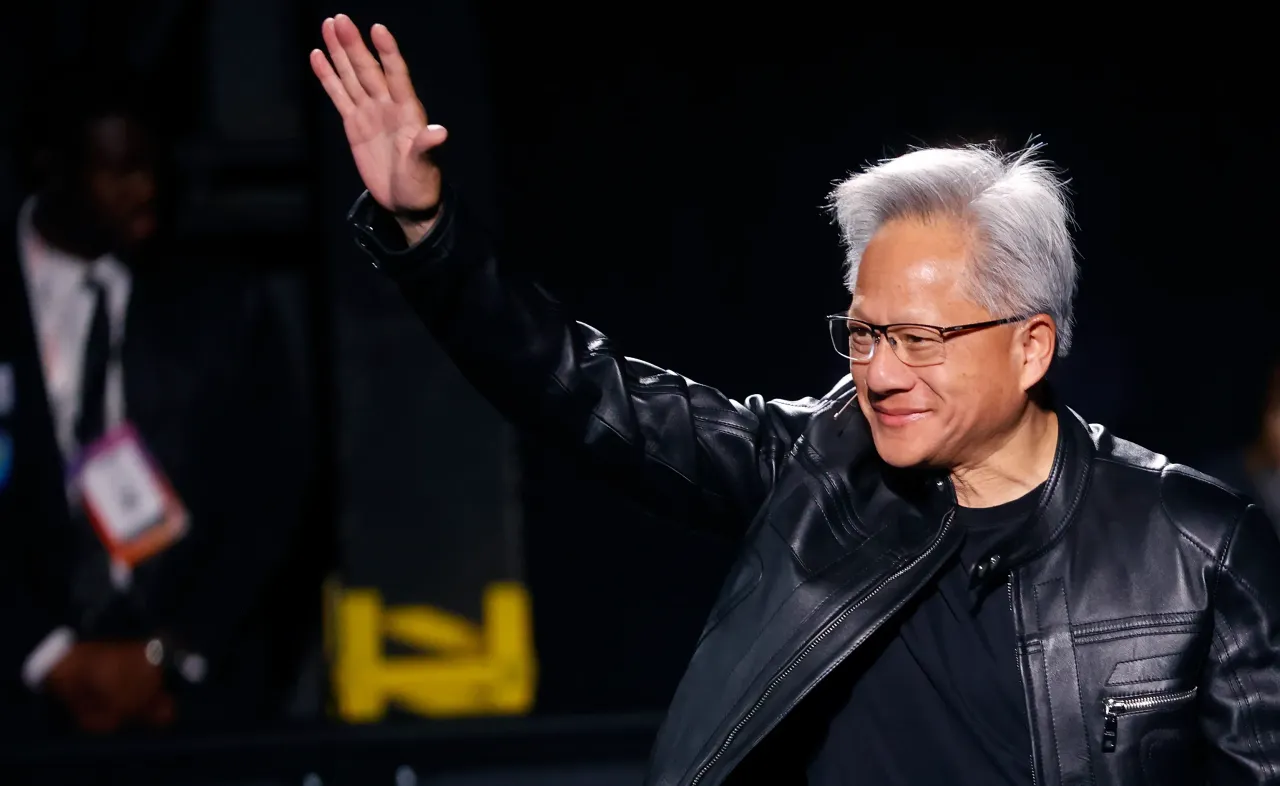It has been two years since the Nvidia AI boom began reshaping the technology landscape. Once known primarily for gaming graphics cards, Nvidia has now become a central player in the artificial intelligence (AI) revolution.
The company’s journey over this period has been extraordinary, with its revenues tripling and profits quadrupling, driven largely by surging demand for high performance AI hardware.
Nvidia was originally famous for creating graphics processing units GPUs for gamers. However, with the explosion of generative AI systems capable of creating text, images, and other media demand for Nvidia’s GPUs skyrocketed.
AI models, such as ChatGPT, DALL-E, and Google’s Bard, require immense computational power to train and operate. Nvidia’s GPUs, particularly the H100 and the newer Blackwell chips, have become the backbone of these AI systems.
This transition marked the beginning of the Nvidia AI boom, establishing the company as an indispensable supplier of AI infrastructure worldwide. Businesses ranging from tech giants to AI startups now rely on Nvidia hardware to fuel innovation.
Financial Growth in the AI Era
Nvidia’s financial growth has been phenomenal. In the second quarter of 2025, the company reported revenue of $45.9 billion, a 53% increase compared to the previous year. Net income also soared by 48%, reaching $24.6 billion.
This extraordinary growth reflects the widespread adoption of AI across industries, with data centers accounting for a significant portion of Nvidia’s revenue. The financial success is also evident in stock market performance.
Investors have watched Nvidia’s value surge as AI adoption accelerated, reinforcing confidence in the company’s strategic shift. This Nvidia AI boom demonstrates that aligning technological innovation with market demand can create extraordinary financial results.
A clear example of Nvidia’s influence is its collaboration with Humain, a leading AI firm in Saudi Arabia. Humain’s AI data center uses Nvidia GPUs to manage complex AI workloads, supporting advanced projects like natural language processing and predictive analytics.
This partnership highlights Nvidia’s expanding global footprint and the essential role its hardware plays in AI development. Similarly, Nvidia has partnered with cloud providers such as Microsoft Azure and Amazon Web Services.
These collaborations allow clients worldwide to access Nvidia powered AI capabilities without investing in expensive hardware, further fueling the Nvidia AI boom.
Expert Opinions on Nvidia’s Role
Industry experts recognize Nvidia’s unique position in the AI ecosystem. Jensen Huang, Nvidia’s CEO, often describes the current AI era as akin to a new industrial revolution, with Nvidia at its heart.
Analysts emphasize that Nvidia GPUs are crucial for running AI models efficiently, giving the company an edge over competitors. Dr. Sarah Thompson, an AI researcher at Stanford University, notes, Nvidia’s GPUs are not just faster they are optimized for AI workloads.
This gives developers the ability to experiment and innovate at a scale that was unimaginable a few years ago. For AI developers, Nvidia’s GPUs have been transformative.
Before these high performance GPUs, training large AI models could take weeks or months on conventional hardware. Today, systems like Nvidia DGX accelerate model training dramatically, enabling developers to test ideas, refine algorithms, and deploy solutions faster.
Many small startups credit Nvidia hardware for leveling the playing field. With accessible AI compute resources, even companies without large budgets can innovate, contributing to a more dynamic AI ecosystem. This democratization is a critical aspect of the ongoing Nvidia AI boom.
Challenges and Market Risks
Despite its successes, Nvidia faces significant challenges. Geopolitical tensions, particularly with China, have impacted its business. For example, in 2025, the US imposed restrictions on certain high end GPUs sold to China due to national security concerns.
Although some restrictions were later eased, Nvidia must navigate these uncertainties carefully. Additionally, the AI hardware market is highly competitive. Companies like AMD and Intel are investing heavily in AI capable chips, aiming to capture a portion of the market.
Nvidia must continue to innovate, ensuring that its products remain the preferred choice for AI workloads. The upcoming Rubin chip is expected to meet the demands of next generation AI models, but market adoption will determine its success.
Nvidia’s strategy extends beyond hardware. The company invests heavily in software ecosystems, developer support, and AI research collaborations. This holistic approach strengthens Nvidia’s position in the AI sector and ensures that its hardware integrates seamlessly with the latest AI models.
By maintaining strong partnerships with cloud providers, research institutions, and AI startups, Nvidia creates a network effect: as more companies rely on its GPUs, the company gathers feedback, improves its products, and expands its influence.
This strategy has been a key driver behind the Nvidia AI boom, ensuring sustainable growth in a rapidly evolving market. As Nvidia approaches the second anniversary of its AI driven transformation, its prospects remain bright.
Emerging technologies like generative AI, autonomous systems, and AI powered healthcare solutions all require high performance GPUs. Nvidia is well positioned to supply the infrastructure needed for these innovations.
However, maintaining leadership requires constant vigilance. Geopolitical shifts, rising competition, and evolving AI demands could impact growth. Nvidia’s ability to anticipate trends, innovate rapidly, and maintain strategic partnerships will determine how long the Nvidia AI boom continues.
Nvidia’s journey from a gaming GPU manufacturer to a linchpin of the AI revolution demonstrates the power of adaptability and vision.
The company’s remarkable financial growth, strategic collaborations, and technological leadership showcase why Nvidia is at the center of the AI ecosystem.
For developers, businesses, and investors alike, Nvidia’s story serves as an example of how embracing emerging technology can transform a company’s fortunes. As AI continues to expand into every facet of society, Nvidia’s influence will likely grow, cementing its role in shaping the future of technology.

